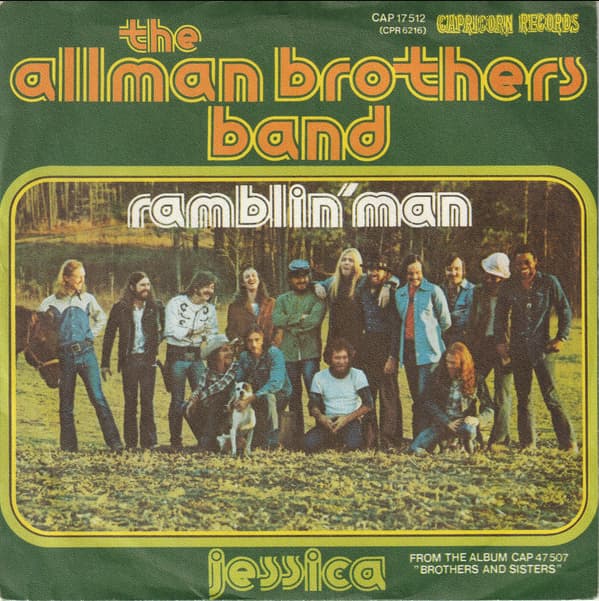
The Allman Brothers Band’s “Ramblin’ Man”: A Country-Tinged Classic That Nearly Didn’t Happen
In the summer of 1973, The Allman Brothers Band did something that seemed almost out of character—they released “Ramblin’ Man,” a song deeply rooted in country music, as the lead single from their album Brothers and Sisters. While this may have raised a few eyebrows among fans of the band’s more blues-rock-oriented catalog, it proved to be a masterstroke, as the song not only became a fan favorite but also marked the band’s first and only top 10 single, peaking at number two on the Billboard Hot 100.
The origins of “Ramblin’ Man” are as fascinating as the song itself. Written and sung by guitarist Dickey Betts, the track was inspired by a 1951 song of the same name by country legend Hank Williams. Betts’ version, however, is much more than a simple homage; it’s a reflection of his own experiences and the nomadic lifestyle that often accompanies a life in music. Despite its obvious country leanings, The Allman Brothers Band was initially hesitant to record the track. The song’s country flavor seemed at odds with the band’s established sound, which leaned heavily into blues and rock.
Betts, however, was persistent. He had been working on the song for over a year, with the lyrics coming together in a late-night writing session at bassist Berry Oakley’s kitchen. The band’s reluctance to embrace the song was understandable. As drummer Butch Trucks later recalled, they all recognized it as a good song, but they weren’t sure it fit the band’s style. It was only after keyboardist Chuck Leavell joined the band and expressed his enthusiasm for the track that they decided to give it a shot.
Recording “Ramblin’ Man” was a pivotal moment for the band. It was one of the first songs laid down for the Brothers and Sisters album, and the long guitar jam near the end of the track—which would become a hallmark of their live performances—was developed during the recording sessions. Guitarist Les Dudek played a crucial role in these sessions, contributing the harmonies that give the song its distinctive sound. The final recording session was an intense experience, with Dudek standing in the spot once occupied by the late Duane Allman, while Oakley looked on, adding an emotional weight to the proceedings.
Despite the band’s initial reservations, “Ramblin’ Man” was released as a single, and its success was immediate. The track resonated with listeners, blending elements of country, rock, and blues into a sound that was uniquely The Allman Brothers Band. Johnny Sandlin, who produced the album, admitted he thought it was “crazy” to release the song as a single because it sounded so different from the band’s other material. But it was precisely this difference that helped it stand out.
The success of “Ramblin’ Man” marked a turning point for The Allman Brothers Band. It showed that they could stretch their musical boundaries and still connect with a broad audience. Today, the song remains one of their most beloved tracks, a reminder of a time when the band took a risk that paid off in a big way. Whether you’re a long-time fan or a newcomer to their music, “Ramblin’ Man” is a song that captures the spirit of The Allman Brothers Band at their best—unafraid to explore new territory while staying true to their roots.